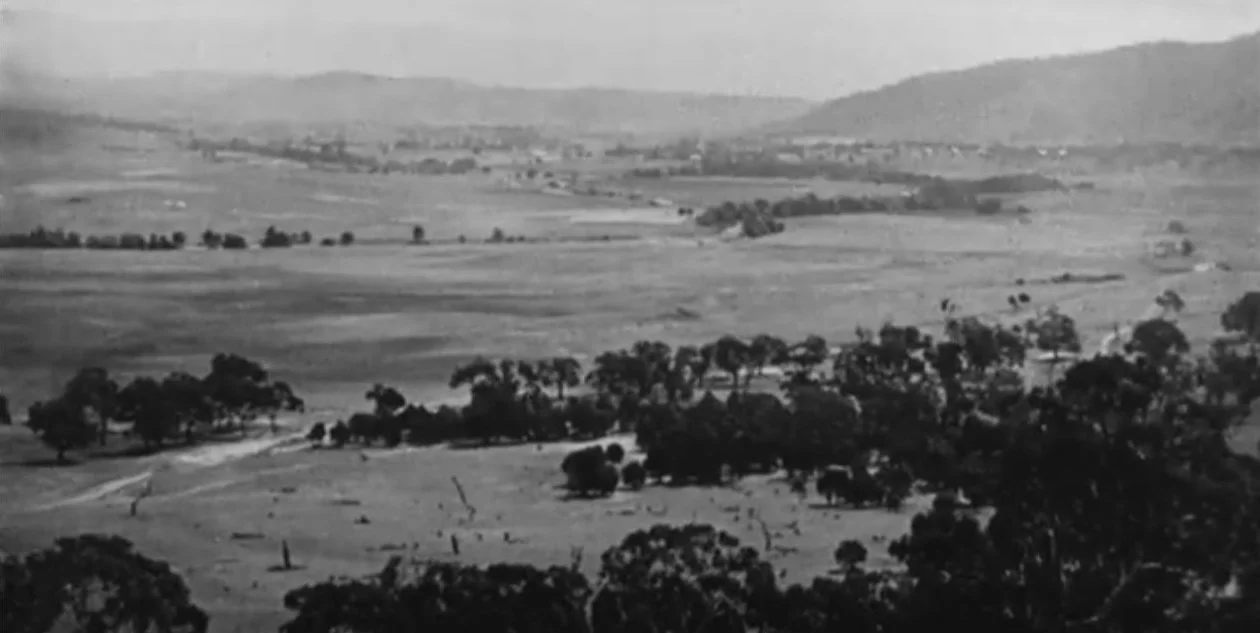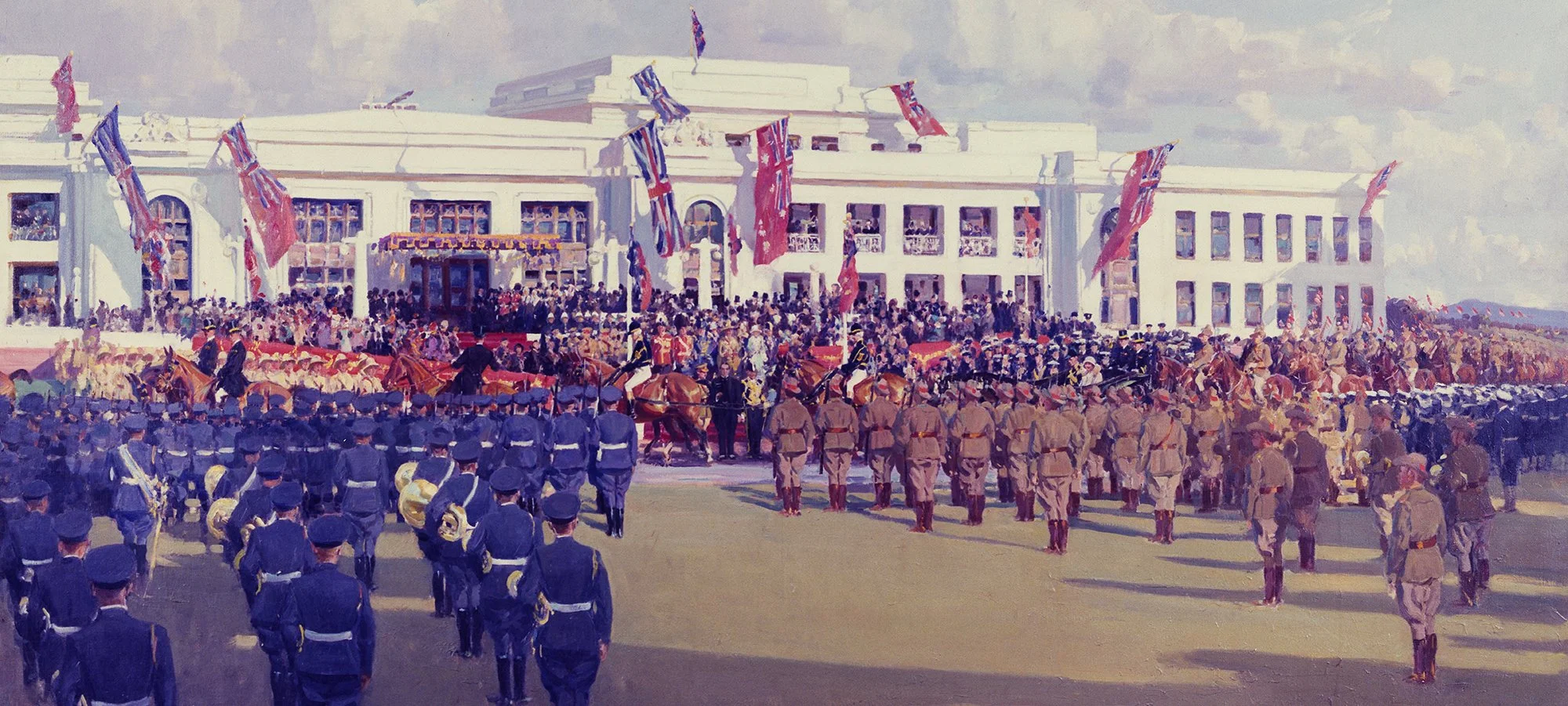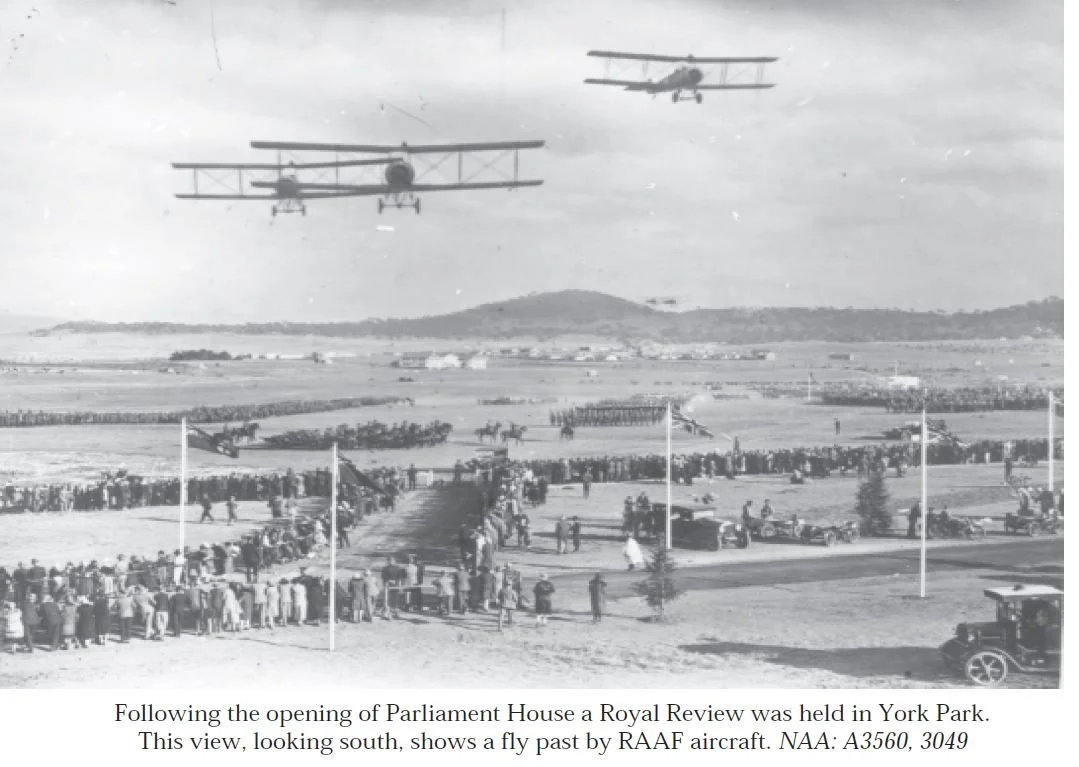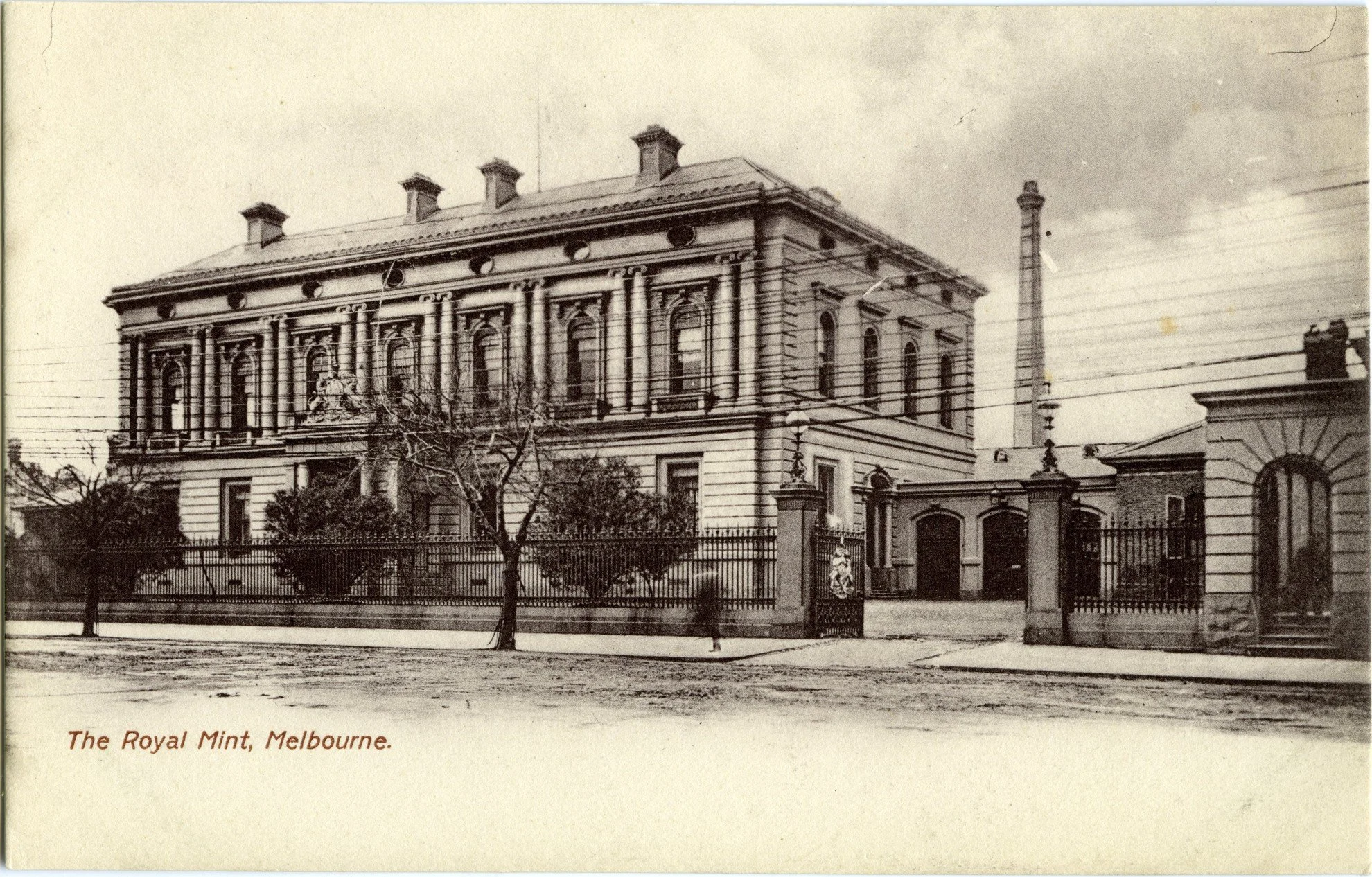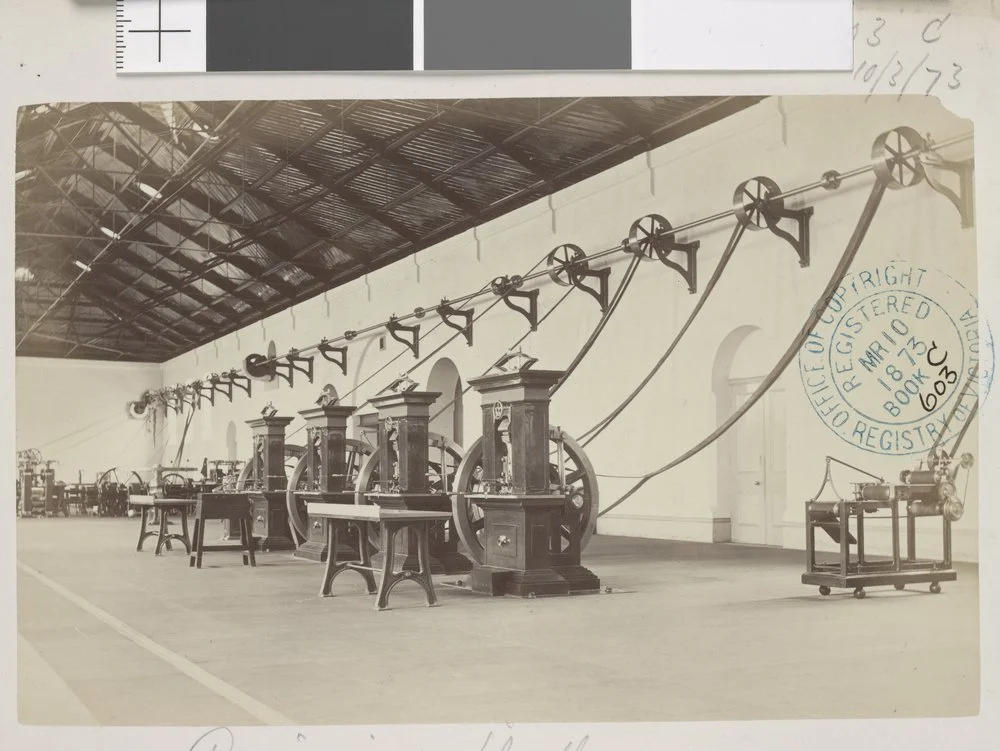A Capital’s Birth, A Nation’s Pride
By Denis Richard, Coin Photography Studio
May 1, 2025
7-minute read
1927 Canberra Florin
In the heart of Australia's capital stands a grand and imposing structure known as the Old Parliament House. It has witnessed some of the most significant moments in Australian political history. This magnificent building served as the seat of power for the Australian government for over six decades. It is a monument to Australia's democratic beginnings, and its grand opening is celebrated on the 1927 Commemorative Florin.
The establishment of Canberra as Australia’s capital was not without controversy. Following Federation in 1901, a fierce rivalry between Sydney and Melbourne for capital status led to a compromise: a new, purpose-built city between the two. Officially named on March 12, 1913, Canberra was envisioned by architect Walter Burley Griffin as a city of grand geometric designs.
Architect Walter Burley Griffins' vision for Canberra.
Image right, Canberra in the 1920s.
The development of Canberra proved challenging. At the time, Canberra was a vast and inhospitable territory, home to more sheep than people. The area was little more than a sparse collection of isolated buildings, surrounded by plains with only a few mature trees.
Minister of Home Affairs King O’Malley drove the first stake at the ceremony to mark the start of the city's development.
The Temporary Solution That Endured
World War I delayed the construction progress, but the need for a new parliamentary home became pressing after the war. However, budget constraints in the aftermath forced the government to opt for a provisional Parliament House rather than a permanent structure. Construction began on August 28, 1923, despite objections from Walter Burley Griffin, who feared the temporary building would disrupt his meticulously planned cityscape, likening the proposal to "filling a front yard full of outhouses."
On May 9, 1927, the provisional Parliament House was officially opened in a grand ceremony led by the Duke of York (later King George VI).
The event featured a royal gold key-turning, a national anthem rendition by Dame Nellie Melba —for whom Melba toast was created— and an air force flypast. Guests dined on turtle soup and Canberra pudding, celebrating a moment that solidified Canberra as the nation’s political heart.
The 1927 Canberra Florin: A Commemorative Coin for the Ages
In January 1927, Australian newspapers proudly announced that "A florin of special design is to be issued in Australia to commemorate the opening of the Federal Parliament at Canberra on May 9, by His Royal Highness the Duke of York." The Acting Prime Minister, Sir Earle Page, emphasized the significance of the event, stating, "...it was felt that the historical occasion justified a special currency issue..." He further noted, "...the issue of the special coin would provide a ready means by which everybody in the Commonwealth could retain a memento of the occasion."
The Australian government issued the sterling silver Canberra Florin on May 9th, 1927. The nation’s first circulating commemorative coin. Designed by George Kruger Gray, the coin featured an elegant depiction of Parliament House’s northeast façade within an oval frame, accompanied by crossed scepters. At the center of the scepters is a raised oval bearing the year 1927. Notably, early news reports about the new florin indicated that the reverse design "...will include the coats-of-arms of the different States." However, this description was entirely different from the parliament house design that entered circulation just a few months later.
The obverse bore a shortened portrait crafted by Sir Edgar B. Mackennal of King George V, adorned in the Imperial Crown and the Ermine Robe of State, with the Latin inscription: GEORGIVS V D. G. BRITT: OMN: REX F. D. IND: IMP, translating to "George V, by the Grace of God, King of all the British territories, Defender of the Faith, Emperor of India." Each florin contains a silver weight of 10.46 grams.
A Race Against Time
With only 15 weeks between the coin’s public announcement and its release, the challenges of production become evident. If two weeks were allocated for nationwide distribution and the reverse die took four to six weeks to arrive from London by ship, the Melbourne Mint had just 7-9 weeks to strike 2 million coins. While not an insurmountable timeframe, it left little room for significant design modifications.
Minting challenges arose due to the design's high relief at the steps of Parliament House and King George V's ear on the obverse. Many florins lack "full steps," making sharply struck examples particularly desirable among collectors.
The two million florins minted exceeded the mintage of the standard 1927 Coat of Arms issue. The commemorative coin was distributed through banks, and many were saved as souvenirs, making high-grade Canberra florins available today.
Demand and Legacy
The release of the Canberra Florin was met with significant public enthusiasm. On May 9, 1927, banks across Australia reported long queues, with thousands lining up to secure the special coin. The Commonwealth Bank in Sydney alone distributed £5,000 worth of florins, requiring extra tellers to manage the overwhelming demand. A report from the Melbourne Mint confirmed that nine months after release, the majority of Canberra Florins had been absorbed by the public, indicating their widespread appeal. Despite initial excitement, many florins, including the coin featured here, eventually entered circulation, showing clear signs of wear. The economic hardships of the Great Depression likely contributed to this trend, as financial necessity overrode sentimental value.
Although florin coins largely disappeared from circulation after decimalization in 1966, they were never officially demonetized, so these century-old silver coins remain legal tender to this day.
Old Parliament House Today
Originally budgeted at £200,000, the final cost of Old Parliament House reached £600,000—three times the estimate. Although intended as a temporary facility, it remained in operation until the opening of the new Parliament House in 1988. Today, it houses the Museum of Australian Democracy (MoAD), serving as a living reminder of the nation’s political heritage.
Today, Canberra is home to the Royal Australian Mint, the nation's official mint and the primary facility responsible for producing Australia's circulating coins.
A Final Thought.
Thank you for reading this blog post! I hope you found it informative and enjoyable.
If you're interested in similar topics, be sure to check out our other posts on numismatic subjects. From coin history to coin photography, we have lots to offer.
Remember to leave a comment below with your thoughts and feedback. We love hearing from our readers, and it helps us improve our content.
Thank you again for your support, and we hope to see you back here soon! Happy collecting!


